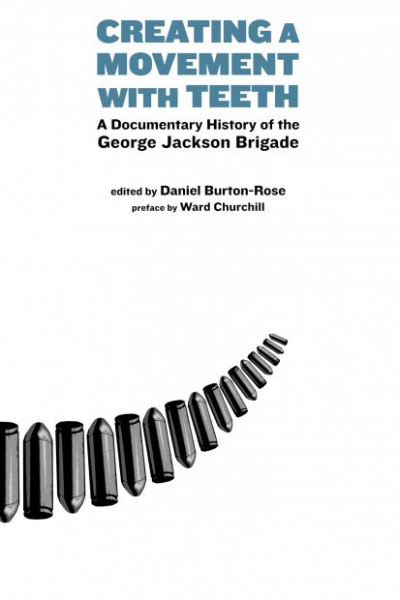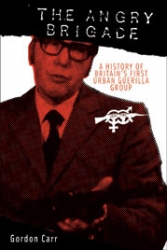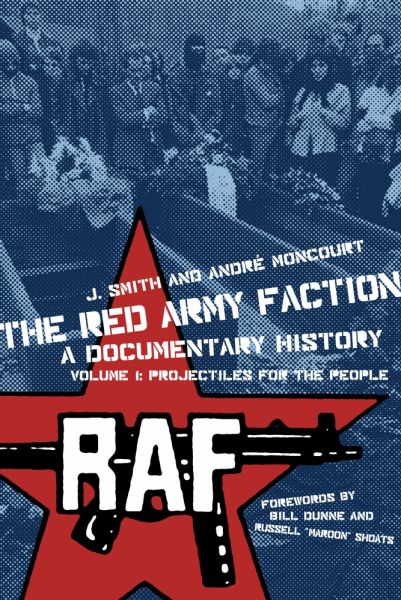
"We are cozy cuddly/armed and dangerous/and we will/raze the fucking prisons/to the ground." In an attempt to deliver on this promise, the George Jackson Brigade launched a violent three-year campaign in the mid-1970s against corporate and state institutions in the Pacific Northwest. This campaign, conceived by a group of blacks and whites, both straight and gay, claimed fourteen bombings, as many bank robberies, and a jailbreak. Drawing on extensive interviews with surviving members of the George Jackson Brigade, Guerrilla USA provides an inside-out perspective on the social movements of the 1970s, revealing the whole era in a new and more complex light. It is also a compelling exploration of the true nature of crime and a provocative meditation on the tension between self-restraint and anger in the process of social change.
Guerrilla USA: The George Jackson Brigade and the Anticapitalist Underground of the 1970s
Daniel Burton-Rose
"One of the first organizations of gay prisoners was founded in 1977 at the Washington state penitentiary at Walla Walla. Initiated by members of the George
Jackson Brigade, a revolutionary guerrilla organization active in the Pacific North- west in the mid-1970s convicted for several small bombings and bank heists, the group worked to protect gay and other vulnerable inmates from sexual harassment and violence. Members met the “chain” (the bus on which new inmates were transferred to the prison) each week and provided orientation to new prisoners to tutor them in the complexities of prison etiquette and warn them of prison dangers. They also worked to secure 'safe cells' and provided escort services for 'those men most likely to be raped, sold, pimped, and preyed upon in the sexual meat market condoned by the administration.' Gay prisoners at Walla Walla boasted some remarkable successes. 'The other day two prisoners ‘sold’ a gay cellmate to another prisoner,' one prisoner wrote. 'We moved into the situation and smashed the deal. The ‘property’ was moved into one of our cells and is under our escort.' They also worked to release gay prisoners from protective custody and helped integrate them safely into the general population.
"The name that Walla Walla prisoners chose for their organization, Men against Sexism, articulated an analysis of prison sexual violence comprehensible to gay and lesbian activists and fully compatible with the ideological foundations of gay liberationist thought. In working toward an analysis of gay oppression, lesbians and gay men looked to sexism as a root cause, indicting in particular the patriarchal values, normative gender roles, and institutionalized heterosexuality nurtured and policed by the nuclear family. Gay Liberation Front activist Martha Shelley ident- ified gay men and lesbians as 'women and men who, from the time of our earliest mem- ories,have been in revolt against the sex-role structure and nuclear family struc- ture.' It was perhaps not surprising that lesbians would be drawn to radical
feminism for analyses of their oppression. But gay male activists also located their
oppression in the nuclear family’s enforcement of normative masculinity. 'Gay liberation is a struggle against sexism,' Allen Young announced. 'Within the context
of our society, sexism is primarily manifested through male supremacy and heterosexual chauvinism.'
"Those critiques inspired Walla Walla’s Men against Sexism, whose members challenged the hypermasculinist prison ethos they viewed as contributing to sexual violence. Prisoners who called on feminist analyses of sexism in order to understand prison oppressions were readily comprehensible to gay activists outside. The language of gay oppression and pride used more generally by many other incarcerated activists resonated with and echoed the language used by activists outside."
"Lessons in Being Gay: Queer Encounters in Gay and Lesbian Prison Activism"
by Regina Kunzel
Radical History Review Issue 100 (Winter 2008)

Bursting into existence in the Pacific Northwest in 1975, the George Jackson Brigade claimed 14 pipe bombings against corporate and state targets, as many bank robberies, and the daring rescue of a jailed member. Combining veterans of the prisoners' women’s, gay, and black liberation movements, this organization was also ideologically diverse, consisting of both communists and anarchists. Concomitant with the Brigade's extensive armed work were prolific public communications. In more than a dozen communiqués and a substantial political statement, they sought to explain their intentions to the public while defying the law enforcement agencies that pursued them.
Collected in one volume for the first time, Creating a Movement with Teeth makes available this body of propaganda and mediations on praxis. In addition, the collection assembles corporate media profiles of the organization’s members and alternative press articles in which partisans thrash out the heated debates sparked in the progressive community by the eruption of an armed group in their midst. Creating a Movement with Teeth illuminates a forgotten chapter of the radical social movements of the 1970s in which diverse interests combined forces in a potent rejection of business as usual in the United States.
Creating a Movement with Teeth: A Documentary History of the George Jackson Brigade
Edited by Daniel Burton-Rose with Preface by Ward Churchill

Between 1970 and 1972, the Angry Brigade used guns and bombs in a series of symbolic attacks against property. A series of communiqués accompanied the actions, explaining the choice of targets and the Angry Brigade philosophy: autonomous organization and attacks on property alongside other forms of militant working class action. Targets included the embassies of repressive regimes, police stations and army barracks, boutiques and factories, government departments and the homes of Cabinet ministers, the Attorney General and the Commissioner of the Metropolitan Police. These attacks on the homes of senior political figures increased the pressure for results and brought an avalanche of police raids. From the start the police were faced with the difficulty of getting to grips with a section of society they found totally alien. And were they facing an organization—or an idea?
This book covers the roots of the Angry Brigade in the revolutionary ferment of the 1960s, and follows their campaign and the police investigation to its culmination in the “Stoke Newington 8” conspiracy trial at the Old Bailey—the longest criminal trial in British legal history. Written after extensive research—among both the libertarian opposition and the police—it remains the essential study of Britain's first urban guerilla group.
The Angry Brigade: A History of Britain's First Urban Guerilla Group
Gordon Carr (with prefaces by John Barker and Stuart Christie)

The first in a two-volume series, this is by far the most in-depth political history of the Red Army Faction ever made available in English.
Projectiles for the People starts its story in the days following World War II, showing how American imperialism worked hand in glove with the old pro-Nazi ruling class, shaping West Germany into an authoritarian anti-communist bulwark and launching pad for its aggression against Third World nations. The volume also recounts the opposition that emerged from intellectuals, communists, independent leftists, and then – explosively – the radical student movement and countercultural revolt of the 1960s.
It was from this revolt that the Red Army Faction emerged, an underground organization devoted to carrying out armed attacks within the Federal Republic of Germany, in the view of establishing a tradition of illegal, guerilla resistance to imperialism and state repression. Through its bombs and manifestos the RAF confronted the state with opposition at a level many activists today might find difficult to imagine.
For the first time ever in English, this volume presents all of the manifestos and communiqués issued by the RAF between 1970 and 1977, from Andreas Baader’s prison break, through the 1972 May Offensive and the 1975 hostage-taking in Stockholm, to the desperate, and tragic, events of the “German Autumn” of 1977. The RAF’s three main manifestos – The Urban Guerilla Concept, Serve the People, and Black September – are included, as are important interviews with Spiegel and le Monde Diplomatique, and a number of communiqués and court statements explaining their actions.
Providing the background information that readers will require to understand the context in which these events occurred, separate thematic sections deal with the 1976 murder of Ulrike Meinhof in prison, the 1977 Stammheim murders, the extensive use of psychological operations and false-flag attacks to discredit the guerilla, the state’s use of sensory deprivation torture and isolation wings, and the prisoners’ resistance to this, through which they inspired their own supporters and others on the left to take the plunge into revolutionary action.
Drawing on both mainstream and movement sources, this book is intended as a contribution to the comrades of today – and to the comrades of tomorrow – both as testimony to those who struggled before and as an explanation as to how they saw the world, why they made the choices they made, and the price they were made to pay for having done so.
The Red Army Faction, A Documentary History - Volume 1: Projectiles For the People
Edited by J. Smith and André Moncourt
Forewords by Russell "Maroon" Shoats and Bill Dunne



No comments:
Post a Comment